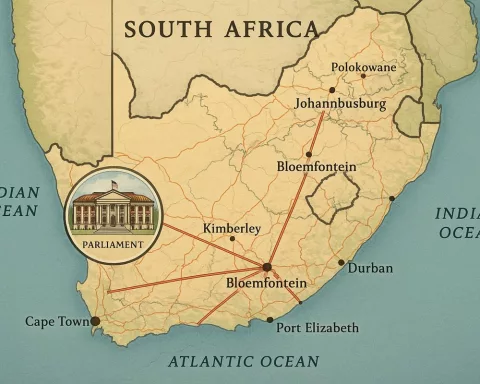Heart Awareness Month and World Heart Day are campaigns that aim to increase awareness about cardiovascular disease (CVD) and the importance of heart health. The Heart and Stroke Foundation of South Africa (HSFSA) organizes various community-based activities and programs, such as the School Health Promotion Initiative, to educate individuals about the advantages of maintaining optimal heart health. It is crucial to understand the effects of hypertension, diabetes, climate change, and pollution on CVD to determine one’s cumulative risk. By adopting healthy habits and supporting the HSFSA, individuals can minimize the risk of CVD onset and decrease morbidity and mortality.
Embracing Heart Health Awareness Campaigns
The Use Heart, Know Heart campaign highlights this year’s Heart Awareness Month (HAM) and World Heart Day, with the backing of the World Heart Federation (WHF) and its affiliates, including the Heart and Stroke Foundation of South Africa (HSFSA). The campaign underscores the significance of appreciating and maintaining optimal heart health at personal and societal levels.
World Heart Day (WHD) takes place annually on September 29th and brings HAM’s weekly themes to a close, drawing attention to cardiovascular disease (CVD) by lighting up iconic buildings and landmarks across the globe. During HAM, the HSFSA designs weekly themes centered on specific CVD risk factors, such as Young Hearts, Mature Hearts, Hypertension and Diabetes, and Cumulative Risk. In the concluding week, recent findings on climate change and environmental pollution are incorporated into the evaluation of cumulative risk.
The HSFSA organizes various activities in community-based settings throughout provinces like Western Cape, KZN, Eastern Cape, and Gauteng to increase awareness. The flagship program, called the School Health Promotion Initiative (SHPI), seeks to educate young South Africans in public schools about the advantages of choosing healthier options for their heart health and overall well-being. Adopting a life-course strategy, early identification of CVD risk in children may prevent heart conditions during adolescence and adulthood.
Assessing Cumulative Risk and CVD Susceptibility
It is crucial to understand the effects of hypertension, diabetes, climate change, pollution, and co-existing conditions on CVD to determine one’s cumulative risk and take preventive action. When assessing the likelihood of developing CVD, genetic predisposition must also be taken into account.
In South Africa, CVD is responsible for almost one in six deaths, taking more lives than all cancers combined. Every day, 225 South Africans die from heart disease and strokes, making it the country’s second leading cause of death. The World Health Organization (WHO) stated that CVDs accounted for 17.9 million deaths in 2019 (32% of global deaths), with 85% of these fatalities resulting from heart attacks and strokes. An estimated 75% of CVD-related deaths occur in low- and middle-income countries (LMICs), and South Africa is classified as a middle-income nation according to World Bank standards.
CVD is a leading cause of death within the non-communicable disease (NCD) cluster in South Africa. The HSFSA endorses the NCD Alliance’s Global Week for Action on NCDs, advocating for collective efforts to lessen the worldwide NCD burden and advance health equity. By adopting healthy habits at every stage of life, individuals can minimize the risk of CVD onset and decrease morbidity and mortality, even if they are genetically predisposed.
Empowering Individuals Through Heart Health Programs
The HSFSA conveys preventive and motivating messages through its various programs and media platforms, reaching South Africans of all demographics. The foundation’s goal is to encourage individuals to take charge of their health and nurture their hearts through self-management.
On World Heart Day, look for landmarks bathed in red, both nationally and globally, as a reminder of the prevalence of CVD. Additionally, teams across provinces such as Western Cape, Gauteng, KZN, and Eastern Cape will organize activities on September 29th. Some notable locations include the Paddagat shopping center in George, Ushaka Marine World in Durban, Cedar Square in Fourways, Gauteng, and the V&A Waterfront Clock Tower in Cape Town.
By supporting the HSFSA, you can help achieve the Sustainable Development Goal (SDG) targets, advocating for universal health coverage, access to medication, and overall improvements in health and well-being.
Established in 1980, the Heart and Stroke Foundation South Africa (HSFSA) is a non-governmental, non-profit organization dedicated to reducing the impact of cardiovascular disease in South Africa and easing the burden on the nation’s healthcare system. The HSFSA aims to enable individuals to adopt healthy lifestyles, make better choices, seek appropriate care, and emphasize prevention. To learn more, visit www.heartfoundation.co.za, www.facebook.com/HeartStrokeSA, and www.twitter.com/SAHeartStroke.
1. What are Heart Awareness Month and World Heart Day?
Heart Awareness Month and World Heart Day are campaigns that aim to increase awareness about cardiovascular disease (CVD) and the importance of heart health.
2. What organization organizes Heart Awareness Month and World Heart Day in South Africa?
The Heart and Stroke Foundation of South Africa (HSFSA) organizes various community-based activities and programs for Heart Awareness Month and World Heart Day.
3. What is the School Health Promotion Initiative?
The School Health Promotion Initiative (SHPI) is a flagship program by the HSFSA that seeks to educate young South Africans in public schools about the advantages of choosing healthier options for their heart health and overall well-being.
4. What is cumulative risk, and why is it essential to assess it?
Cumulative risk refers to the combined effects of various risk factors, such as hypertension, diabetes, climate change, pollution, and co-existing conditions, on an individual’s likelihood of developing CVD. It is essential to assess cumulative risk to take preventive action and minimize the risk of CVD onset and decrease morbidity and mortality.
5. What is the prevalence of CVD in South Africa, and how does it compare globally?
In South Africa, CVD is responsible for almost one in six deaths, taking more lives than all cancers combined. Every day, 225 South Africans die from heart disease and strokes, making it the country’s second leading cause of death. Globally, CVDs accounted for 17.9 million deaths in 2019 (32% of global deaths), with 85% of these fatalities resulting from heart attacks and strokes.
6. What is the NCD Alliance’s Global Week for Action on NCDs?
The NCD Alliance’s Global Week for Action on NCDs is a campaign that advocates for collective efforts to lessen the worldwide NCD burden and advance health equity.
7. How does the HSFSA empower individuals through heart health programs?
The HSFSA conveys preventive and motivating messages through its various programs and media platforms to encourage individuals to take charge of their health and nurture their hearts through self-management.
8. How can individuals support the HSFSA’s mission?
Individuals can support the HSFSA by adopting healthy habits at every stage of life, making better choices, seeking appropriate care, and emphasizing prevention. By doing so, they can help achieve the Sustainable Development Goal (SDG) targets, advocating for universal health coverage, access to medication, and overall improvements in health and well-being.








